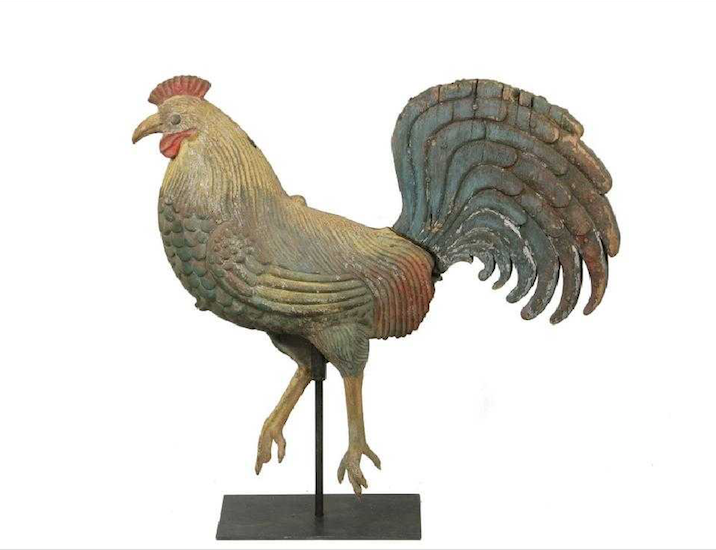
NEW YORK — Ironically, while weathervanes are among the most adored forms of American folk art, they’re technically not folk art at all. Most were manufactured in quantity as opposed to being handmade by a single artist. That said, even the factory-made weathervanes of the 19th and 20th centuries have a folky charm that one otherwise would expect of a one-of-a-kind artwork. Originally created as functional rooftop objects that kept farmers up to speed on the wind’s direction, weathervanes are coveted purely for their aesthetic appeal.
Collected for decades, antique weathervanes (vanes for short) became so valuable, there were rashes of thefts in the 1960-’70s. People literally would steal them from the roofs of barns, churches and houses. Thankfully, collectors need only look as far as dealers and auctioneers specializing in Americana to acquire legally acquired examples of these beautiful works of art.
Surface and form are two major attributes of desirable antiques, and weathervanes have both in spades. As sculptural works of art, weathervanes, whether full bodied or one-dimensional (the latter known as silhouette vanes), can be both whimsical and striking. Their original zinc or copper surface, sometimes sheet iron, ages to a fine patina after decades in the outdoors. In his book, The Art of the Weathervane, Steve Miller wrote, “The form and beauty often are greatly enhanced by the ravages of nature upon its surface.”
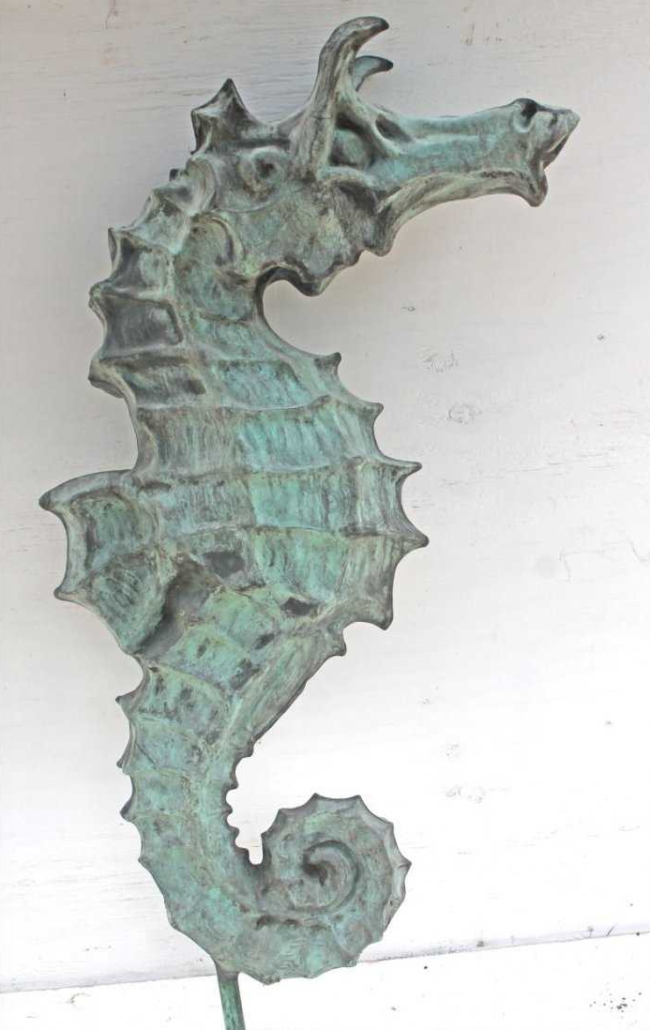
“I think weathervanes appeal to folk art and decorative arts collectors because they are very sculptural,” said Stephen L. Fletcher, Director of American Furniture & Decorative Arts Skinner Auctioneers & Appraisers in Boston. Condition is the third factor that contributes to a piece’s value. “Condition is a big deal,” Fletcher said.“If you have an original weathervane with verdigris, with vestiges of gilding, they bring significantly more than weathervanes that have been cleaned or regilded. To find one with original untouched surface, that is something that does not happen all that often.”
One expects to find signs of aging on a weathervane, but surprisingly, even bullets apparently can’t trash a vane’s value. “People took potshots at them. It’s not uncommon to see a weathervane that has patched bullet holes,” Fletcher said, noting that in cases where the holes are not too noticeable, the value is not dramatically affected. Not surprisingly, perfect examples net the biggest prices.
“As with most antiques, value is a compounded combination of execution of design, rarity, condition and provenance. A one-off example made by an expert craftsman, in original surface without bullet holes or storm damage, and which came off a landmark establishment, is a financial home run,” said John Bottero, Vice President at Thomaston Place Galleries in Thomaston, Maine.
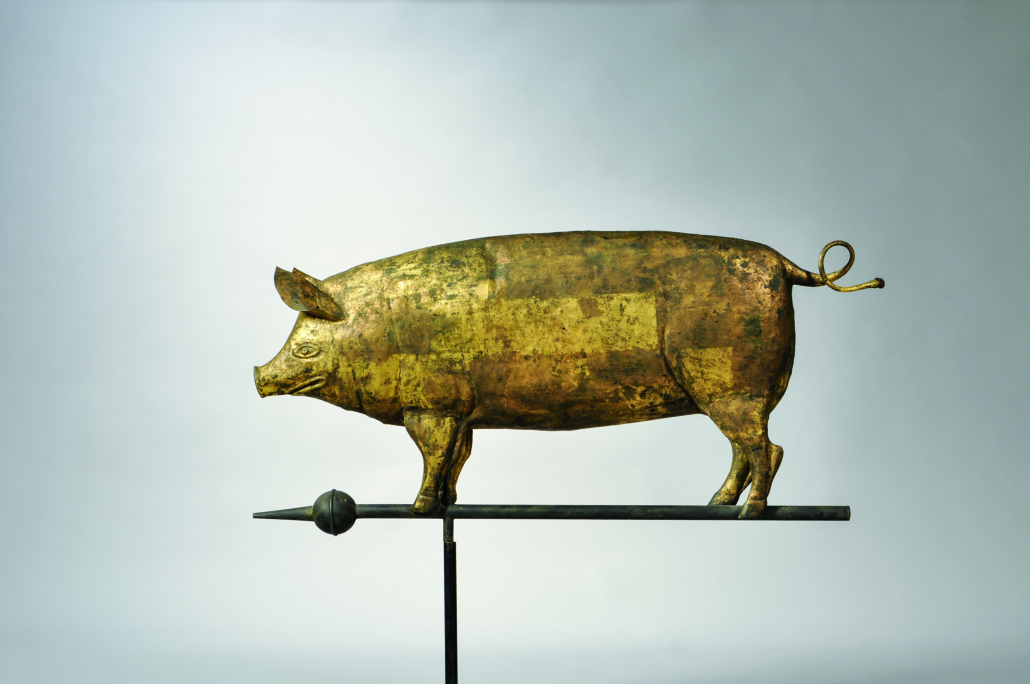
While they were made in many shapes, most vanes took animal forms — horses, Merino lambs, cows, roosters, stags and pigs among them. “Many were trade related. Horse farms had horses, dairy farms had cows and bulls; sheep farms had sheep, poultry farms had roosters, and marine establishments had codfish, whales, ships, et cetera, depending on the goods or services offered,” Bottero said. Patriotic symbols like eagles and the Goddess of Liberty were also popular themes.
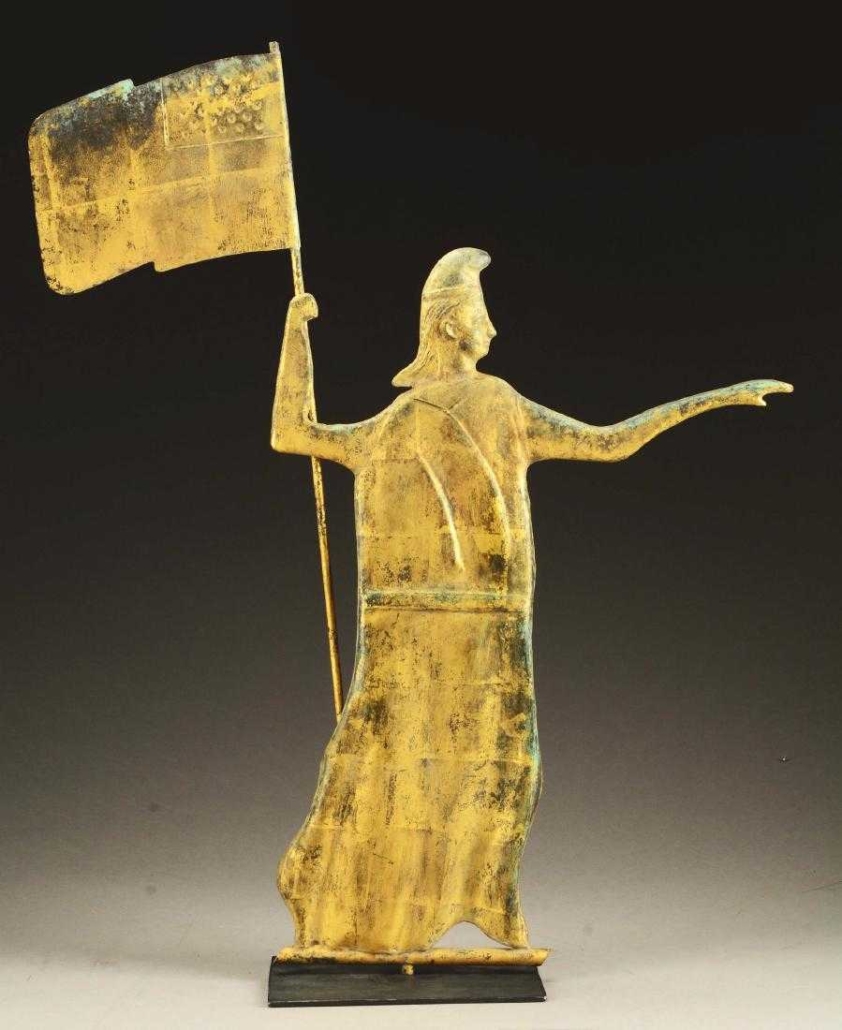
Other desirable vanes include figural depictions of tennis players, angels or Native Americans. In October 2006, Sotheby’s New York sold a Mott weathervane of an Indian chief to noted folk art collector Jerry Lauren for $5.84 million, establishing a new folk art record. “I thought I owned the best weathervane until this one came along,” he said at the auction.
One of the earliest weathervanes in America was the grasshopper vane that sat atop Boston’s landmark Faneuil Hall. Made by coppersmith Shem Drowne in 1742, it was a gift to wealthy merchant Peter Faneuil, for whom Faneuil Hall is named.
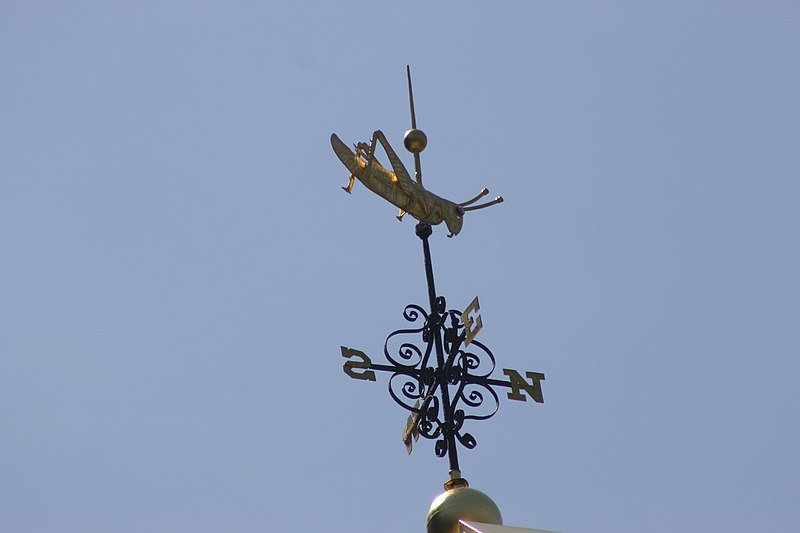
In 1974, the golden grasshopper was brazenly stolen from its rooftop post. Paul Revere Carroll, a direct descendant of Paul Revere, was the police detective placed in charge of the case. According to the New England Historical Society, Carroll received a phone call from Plymouth County’s district attorney, who said he had part of the grasshopper. Carroll met up with the DA, who handed him a paper bag with the weathervane’s spire in it.
It turned out that a steeplejack who’d been arrested on drug charges had stolen the vane and confessed to the crime in hopes of getting a plea bargain in his drug case. The grasshopper was re-gilded and re-mounted to its perch atop Faneuil Hall — but with the addition of a locking device to ensure it couldn’t be stolen again. [Read more about Faneuil Hall and its famous grasshopper in the book Faneuil Hall and Faneuil Hall Market: Or, Peter Faneuil and His Gift by Abram English Brown]
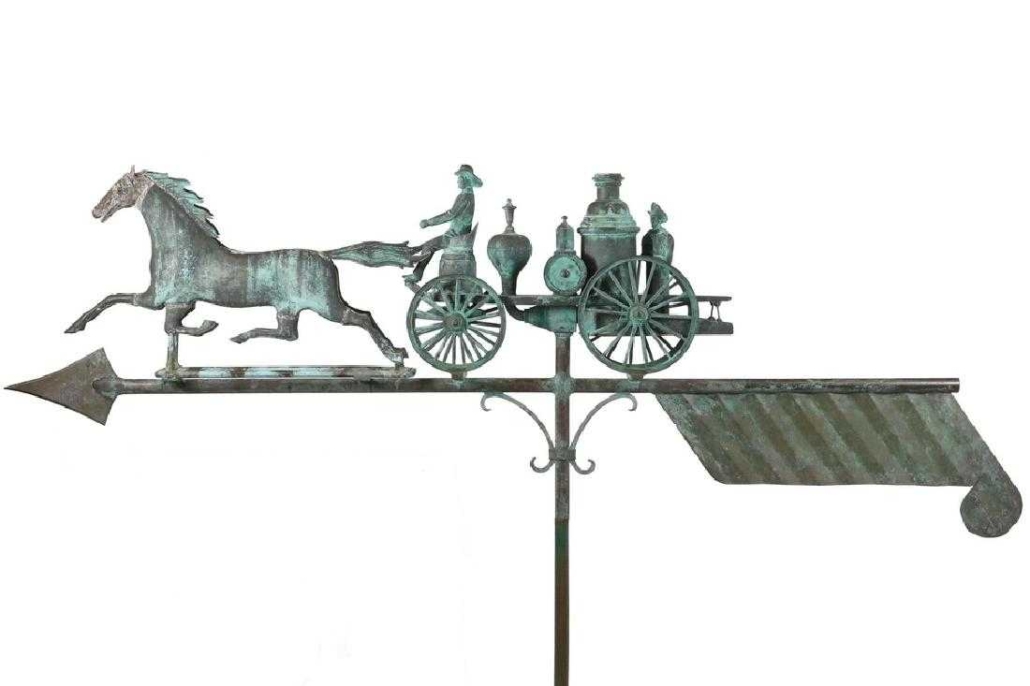
Best known among the companies that made weathervanes were J.W. Fiske in New York City, J.L. Mott Iron Works, based in Chicago; and Cushing & White in Waltham, Massachusetts. There were many other smaller manufacturers and metalworkers who produced vanes.
Many weathervanes have been resurfaced or re-gilded, and as long as they are marketed as such, there is still a market for them, Fletcher said. “Weathervanes vary dramatically in value. A trotting horse would, in this market, bring in the high hundreds,” he said. “I remember we sold a circa-1910 vane deaccessioned from a historical society that was made in the form of an open touring car. It had been [acquired from] a gas station in 1960, meaning it had only been outside in the elements for 50 years, so its condition was quite good. It brought $941,000.”
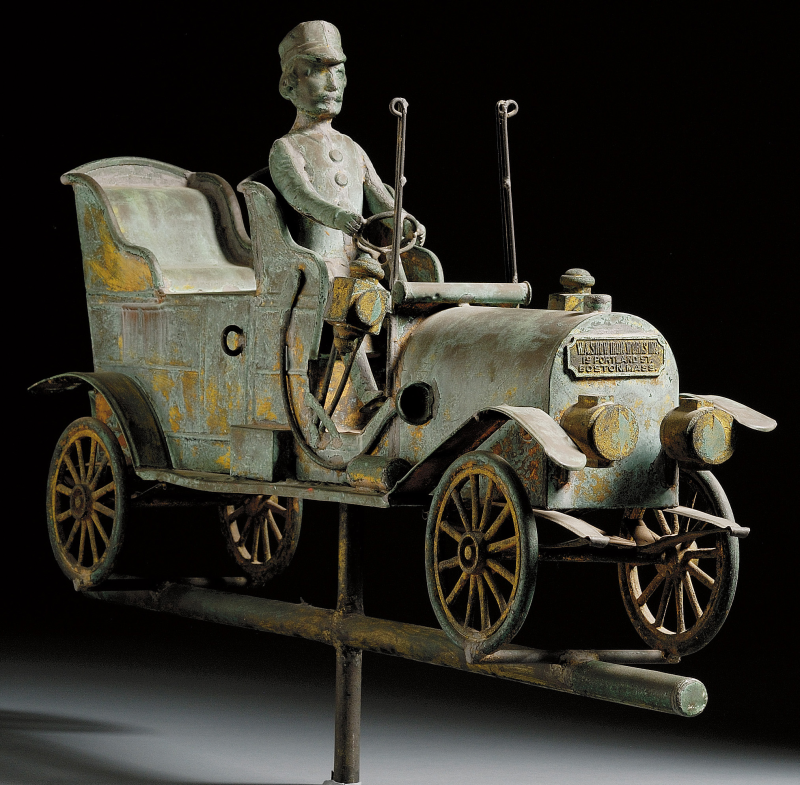
Fletcher hastened to note that exceptional examples like the touring car are the exception, not the rule, and that many weathervanes are affordable. “The prices for a lot of vanes have moderated somewhat, along with the larger Americana market,” he said. The customer base may have shrunk a bit for vanes, but demand for good examples is still strong.”
“Vanes, like many forms of advertising, appeal to collectors due to their form and surface texture, but they also represent wonderful things that are all but erased from the 21st-century landscape,” John Bottero said.
# # #


